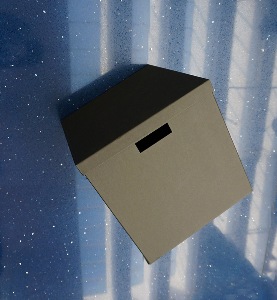Jul 24 2014
Imagine you buy a device that promises to make entangled qubits – pairs of photons, say, that you want to use for sending a secret message or doing a quantum computation. How can you be sure the device's performance is up to spec?
 Schemes for self-testing aim to check that a 'black box' quantum device is what it's meant to be, without making any assumptions during the measurements.
Schemes for self-testing aim to check that a 'black box' quantum device is what it's meant to be, without making any assumptions during the measurements.
CQT researchers Matthew Mckague (now at the University of Otago, NZ), Tzyh Haur Yang and Valerio Scarani proposed a solution to this problem in a paper published in Journal of Physics A: Mathematical and Theoretical in October 2012. That paper, "Robust self-testing of the singlet" has now been awarded the journal's Best Paper Prize 2014.
The journal awards its best paper prize "to celebrate and applaud well written papers that make a significant contribution to their field". The CQT paper is one of two to receive the award in 2014.
A singlet is a pair of qubits that are as entangled as it's possible to get. Neither qubit has a defined value on its own, but the value of one qubit is always opposite to that of the other. This 'correlation' is put to use in schemes for secure communication and computation.
As such quantum technologies reach consumer markets, the question of proving confidence in devices will become a real concern. If you use a device that promises correlations it can't deliver (or that creates extra, undisclosed correlations), your technology may not work or could be insecure. There is lots of effort to design schemes that can be certified without detailed inspection of the quantum goings on – such schemes are known as self-testing, or more generally, device-independent.
To characterise pairs of entangled qubits from a device, researchers would typically measure many sets of them, then analysing the statistics. This is known as 'tomography'. The problem is that traditional tomography makes assumptions about the type of system that is being measured and the measuring devices to draw conclusions. If the assumptions are incorrect, the testing will also fail. It's better to start without assumptions. That's the idea behind the 'self-testing' scheme described by Matthew, Tzyh Haur and Valerio. It treats the device as a 'black box' into which you cannot look, estimating the likelihood that pairs of systems inside the box are singlets by measuring two quantities (CHSH and Mayers-Yao correlations) over many rounds.
The scheme does away with many assumptions, but not all of them. For example, it assumes that the black box behaves the same every round and does not have any memory effect. Since publication of the scheme in Journal of Physics A, there has been a slew of other papers on the idea of self-testing, from Valerio's group and researchers elsewhere. Some have tackled this issue. Valerio, Tzyh Haur and other coauthors have a paper in press at Physical Review Letters that extends the scheme and makes it far more robust – meaning it can better identify states that are realised to within some tolerance, as is often the case in real-world experiments. Watch this space!